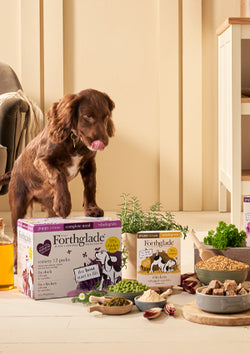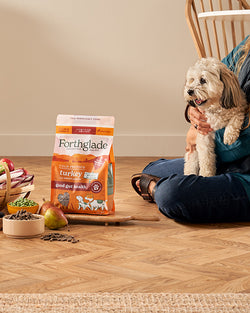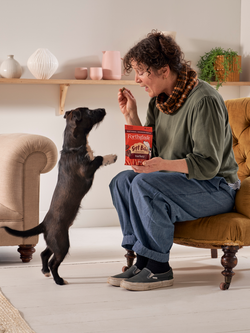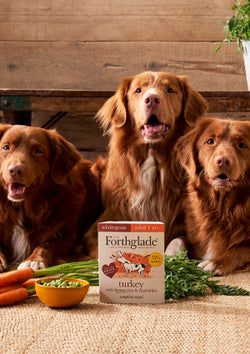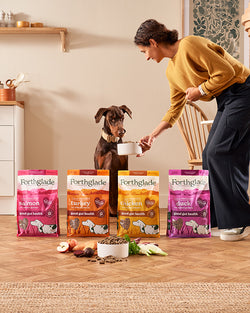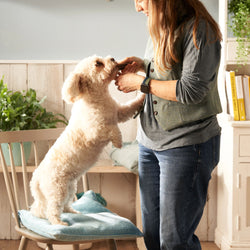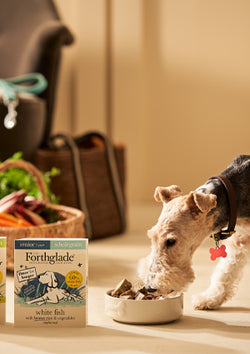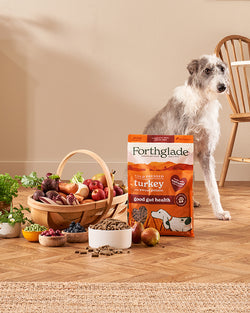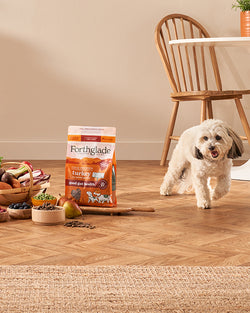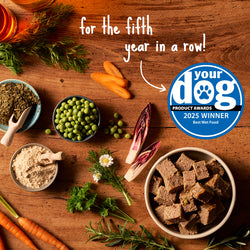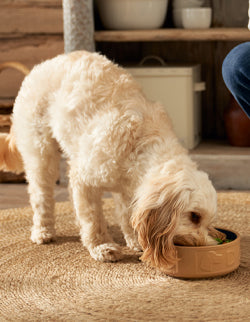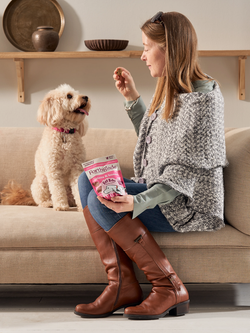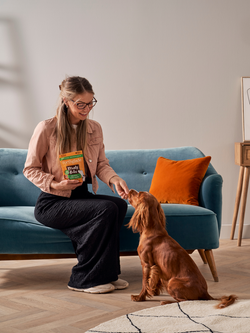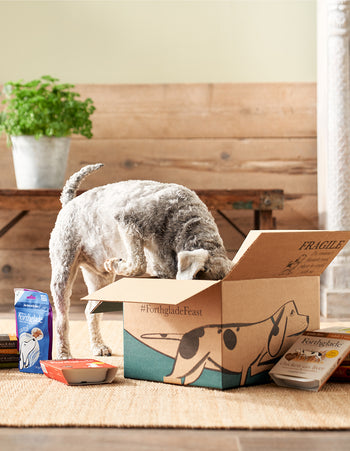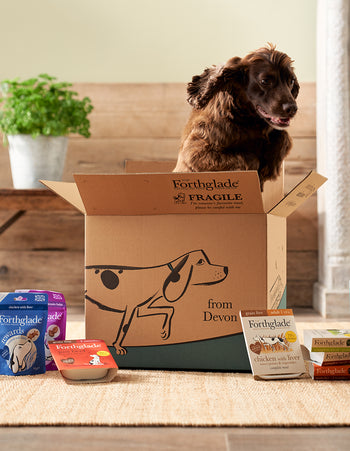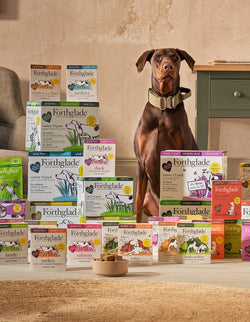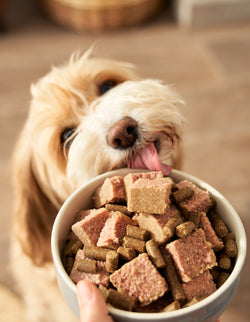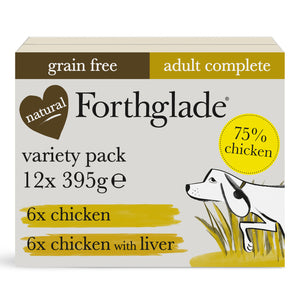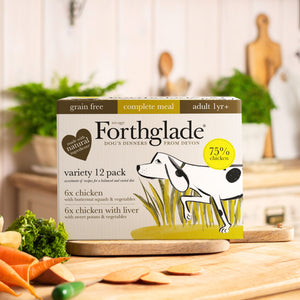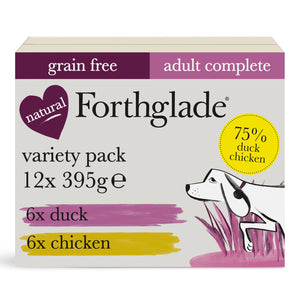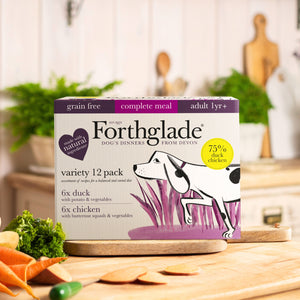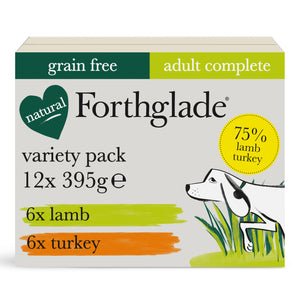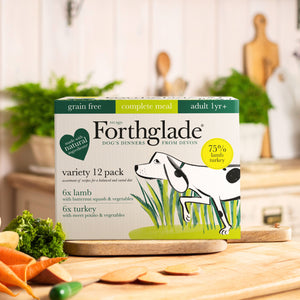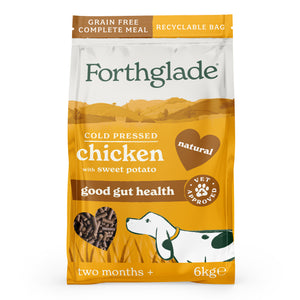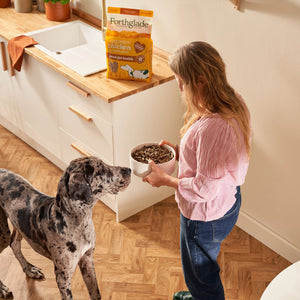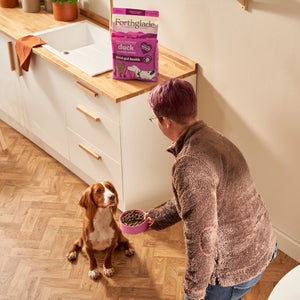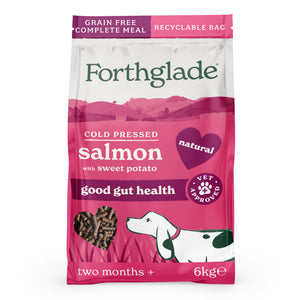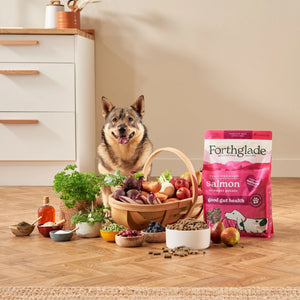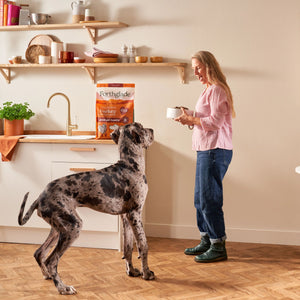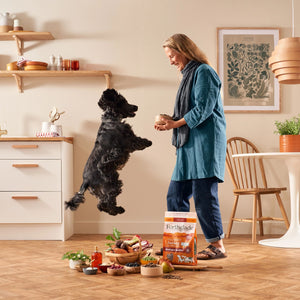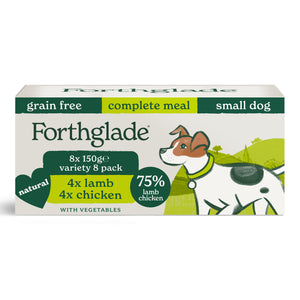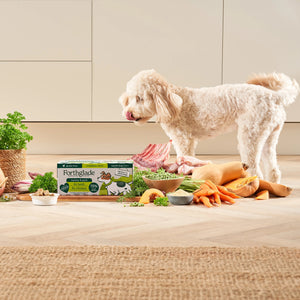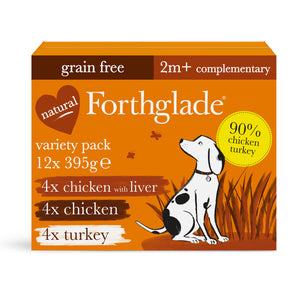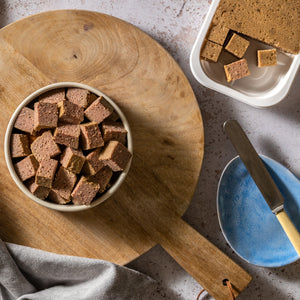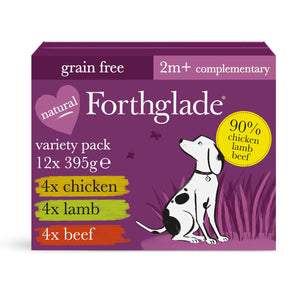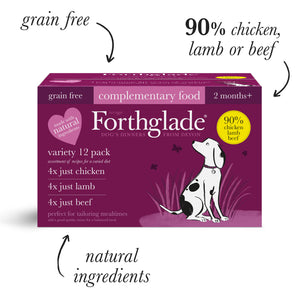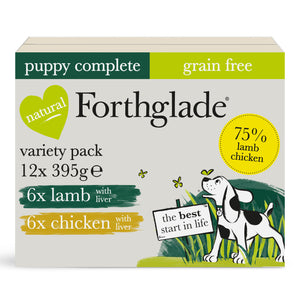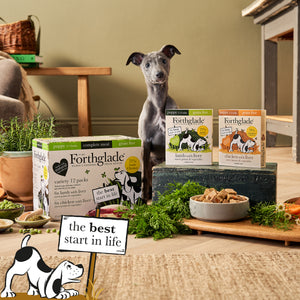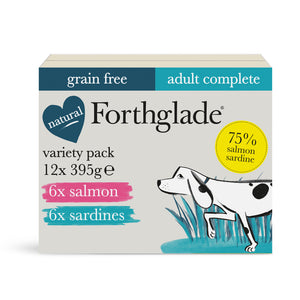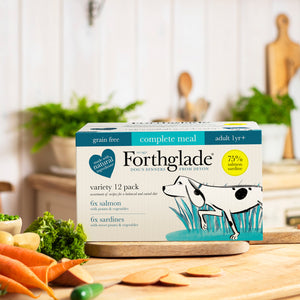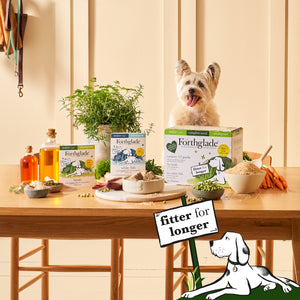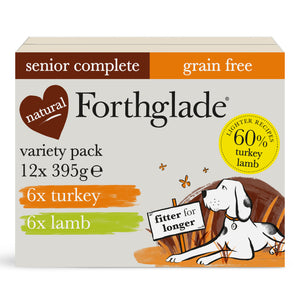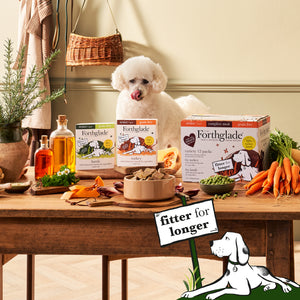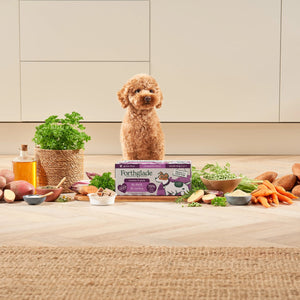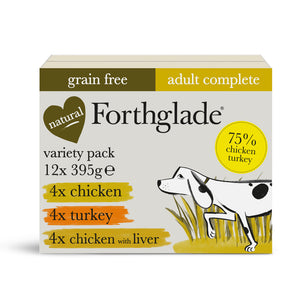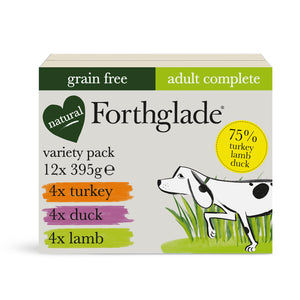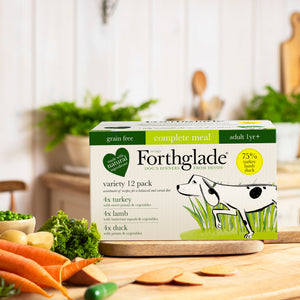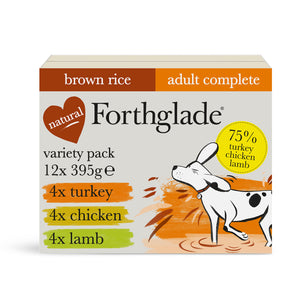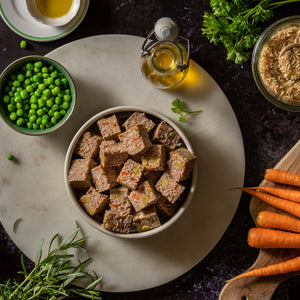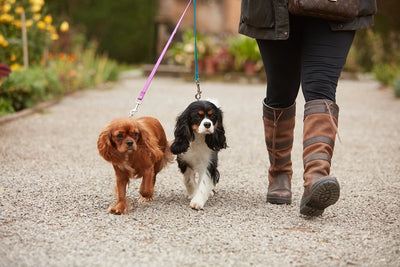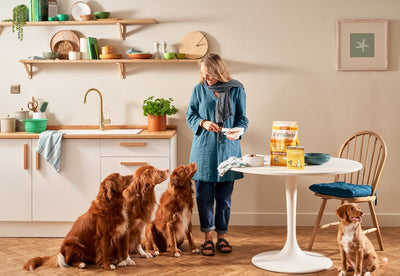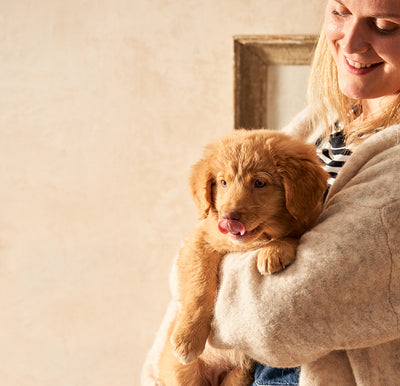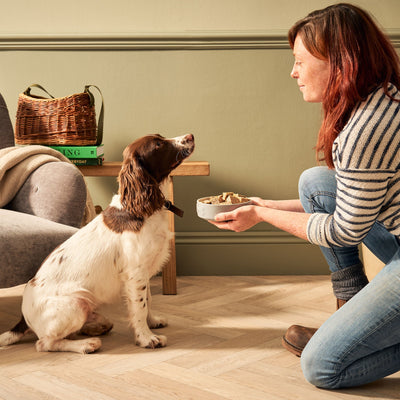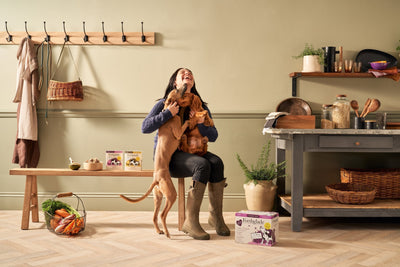
Whether you’re a new dog owner or thinking about your dog’s health, you may be wondering whether wet or dry dog food is the best choice for your dog. Both wet dog food and dry dog food have their benefits and can provide a complete and balanced diet for your dog, and so it can be hard to identify which is the better option for your dog’s daily meal. To help make your decision a little clearer, we’re sharing all you need to know about these two forms of dog food.
What’s the difference between wet and dry dog food?
The primary difference you’ll find between these two forms of food is of course that wet dog food contains more water than dry dog food (also known as dry kibble or dog biscuits). While dry food has a moisture content of around 3-12%, the moisture content is around 60-80% for wet food. As a result of this, the shelf life differs between the foods, with wet food needing to be eaten sooner after opening, while dry kibble can be kept for longer.
Comparing wet vs dry dog food
When choosing a high quality food with good quality ingredients, both dry food and wet food can provide your dog with all the essential nutrients, vitamins and minerals they need. And so, there isn’t a definite right or wrong answer; it all comes down to what works best for you and your dog.

Wet dog food: the benefits
Here are just a few of the benefits of wet dog food…
- It’s tastier
As you may know from when you’ve opened a tray of wet food before, there tends to be a more intense smell and taste for wet food. Coupled with the various textures in a wet meal, we can imagine that wet food probably provides a better sensory experience for your dog’s palate. For senior dogs in particular, the stronger smell of a wet meal can more easily tempt them when their sense of taste may not be as good as it once was.
- Easier to chew
The soft texture of a wet meal is going to be much easier for your dog to chew on than a dry meal. In particular, if you’ve got an older dog, a dog recovering from illness, or one that has missing teeth or dental disease, wet food is a good option to consider to help make meal times a little easier for them.
- Keeps dogs fuller for longer
Thanks to the high moisture content in wet food, meals in this form will satisfy your dog for longer, meaning they won’t need to be fed as much throughout the day. Wet meals also tend to be rich in protein, making it more satiating.
Wet dog food: the disadvantages
Now for some of the disadvantages of wet dog food…
- It’s smellier and messier
If you’ve ever watched a dog excitedly eating a bowl of wet food you’ll know what we mean when we say that wet food can be messy at meal times. The strong smell of wet meals can also be intense for us humans too.
- It has a shorter shelf life
Because of the nature and composition of wet food, it does tend to go off sooner than dry food – once opened, wet food needs to be eaten within a few days to keep it in good condition.
- Harder to portion
Wet food tends to come in pouches or trays, and so while the portions are fixed, you will still need to determine the right amount to feed your dog for each meal to ensure they aren’t being overfed. Our handy dog Feeding Guide is a great way to calculate the ideal portions for your dog, based on their age, weight and activity level.

Dry dog food: the benefits
Here are just some of the benefits of kibble or biscuits for dogs…
- Longer shelf life
Dry dog food has a much longer shelf life than wet food. Once opened, it doesn’t need to be stored in the fridge but can simply be sealed and left in a cool, dry place. This is particularly beneficial for dogs who don’t necessarily eat all their meals at once – you can always leave the food out for longer.
- More economic
Dry kibble tends to come in larger bags and is much easier to portion out, meaning that it’s easier to stock and can be more economical in the long run.
- Less mess
Being in a pellet form, dry dog food is naturally much easier to pour, scoop and clean. It can also help keep dog fur clean too as unlike wet food, it doesn’t tend to get caught in hair around the mouth of longer-haired dogs.
- Dental benefits
While wet food definitely helps dogs with sensitive mouths, dry food also has benefits for dental health. The hard texture of dry food can be known to help keep dogs’ teeth clean – and because it is less likely to get coat teeth (like wet food may), there is less plaque build-up.
Dry dog food: the disadvantages
Now for the disadvantages of kibble or biscuits for dogs…
- Less exciting
There is no denying that dry food lacks the stronger smell, taster and textural variation that wet food offers and so may be a less exciting for dogs.
- Doesn’t provide hydration
Unlike wet food which has a high water content, dry food doesn’t provide the benefit of hydration, which could be an important factor for older dogs or dogs who don’t drink enough water.
- More chewing required
While dry food is good for dog’s dental health, given the harder texture of dry kibble it does require more chewing.
- Higher energy content
There tends to be a higher energy content per portion in dry dog food than wet dog food, and so it’s important to be mindful of portion sizes as with this form of food, dogs consume lots of calories in small quantities.
Should you mix wet and dry dog food?
Mixing wet and dry dog food is a great option for those who want to add variation to mealtimes, mixing or moving between the different types of food. Mixing dry and wet together is certainly a popular choice and is a great way to add variety to your dog’s eating experience.
It is important, though, to keep an eye on the quantities you’re feeding to make sure your dog is getting the right nutrition they need and that they’re not being overfed.
Choosing the best food for your dog
As we’ve identified, there are great benefits to both wet and dry dog foods. No one knows your dog better than you, and so the choice should really come down to what is best for your dog.
With its stronger smell, taste and softer texture, wet food may be a better option for fussy eaters and older dogs (especially those with sensitive teeth) to provide them with a more sensory experience at mealtimes. Dry dog food on the other hand may be better for dogs that don’t finish their meals all at once, or who have beards.
Every dog is different, and individual factors like age, weight and activity level should all be considered when thinking about the best food for your dog. If you’re looking for a little more guidance, why not try our Feeding Guide to help you find the best food for your dog.
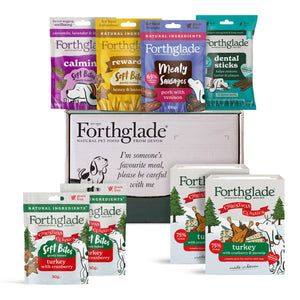
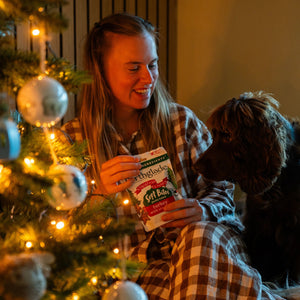

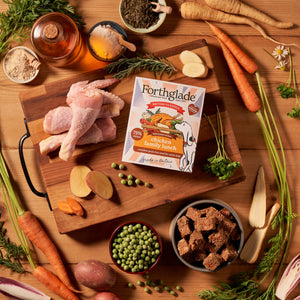
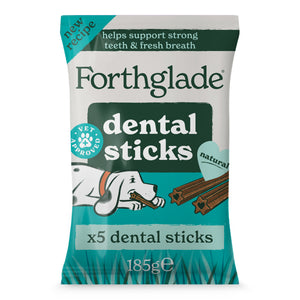
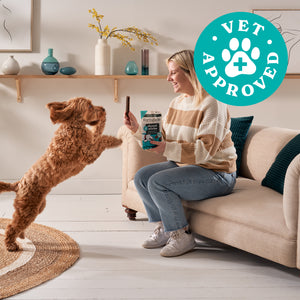
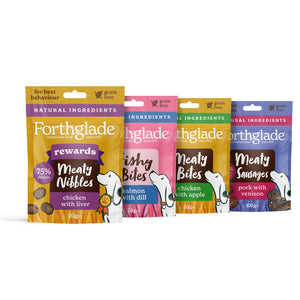
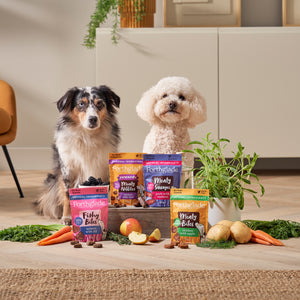


 Over 12,000 5* Reviews
Over 12,000 5* Reviews
 Subscribe & Save At Least 10% Off Every Order!
Subscribe & Save At Least 10% Off Every Order!


